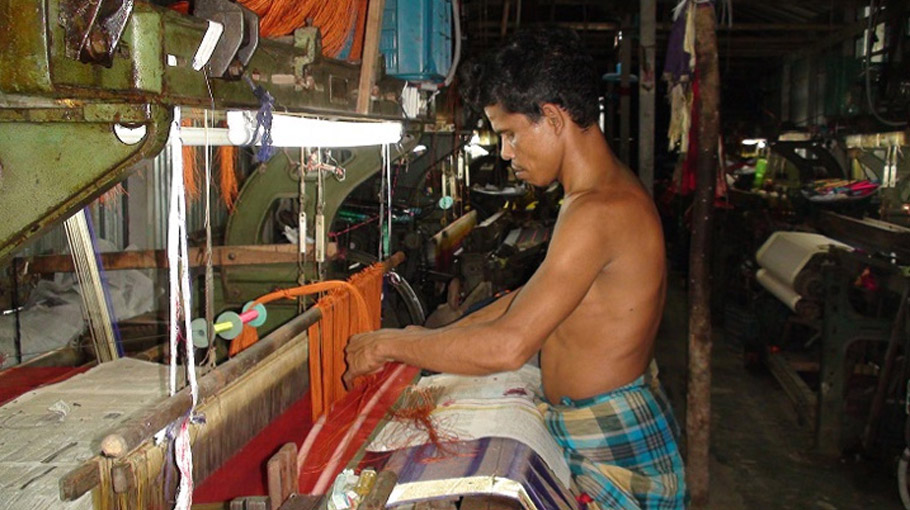Dwindling demand cast shadows on handloom industry

The once captivating melody of handloom weaving machines in Saturia Upazila, situated in Manikganj, is gradually fading as the majority of the handloom factories in this area are facing dire circumstances.
Due to the increased cost of raw materials, transportation expenses, and labor wages, the demand for handloom products is decreasing day by day, leading to a decline in saree production. Many weavers who used to create high-quality Jamdani sarees with their hands are now engaged in agricultural and daily wage labor to make a living. Even those who are still in this profession are struggling financially.
The hub of traditionally produced handloom factories is located in Baraid Union of Saturia Upazila. The art of weaving has been passed down through generations in these families, with many fathers and grandfathers working in the handloom industry to sustain their families.
Not too long ago, around 3,000 families from these areas used to create a variety of handwoven products such as Jamdani, Benarasi, silk sarees, lungis, and gamchas.
The rhythmic sound of handlooms could be heard throughout the night in the entire village, which is why the village earned the reputation of being the "Handloom Village."
In the current scenario, the production of traditional Jamdani sarees in Manikganj has significantly decreased. Instead, handloom weavers are now producing different designs of sarees like Katan, ND Cotton, ND Silk, Suti sarees, Three-Piece suits, Orna, and Dupatta, primarily catering to specific market demands.
A couple of generations ago, Manikganj had around 22,000 handloom families, with approximately 10,000 handlooms actively producing textiles. Today, the number has dwindled to about 2,000 families. Rising costs of raw materials and transportation expenses have led to the closure of many handloom factories.
The owner of a handloom factory in Baraid, Abu Dloar Hossain, explains that the increased costs of yarn, labor wages, and other resources have caused a decrease in demand for handwoven products, resulting in the closure of many handloom factories, one after another.
Manikganj's handloom weavers, like many others, are now struggling to make ends meet. The weavers have been impacted by the rising prices of yarn and transportation costs, which have led to reduced production and increased unemployment.
Abdul Hai, the chairman of the Baraid Union, mentions that the traditional handloom industry in Saturia is on the brink of collapse due to the economic crisis faced by the weavers. The industry is a part of the country's heritage, and to support the weavers, it is important to provide them with the necessary documentation and support.
The General Secretary of Saturia Upazila Handloom Owners' Association, Daud Hasan Lovelu, has stated that currently, around 1,000 workers are employed in 1,000 looms owned by 300 loom owners in Saturia. However, in the past, the number of workers was significantly higher. Furthermore, in the last five years, approximately 1,200 handlooms have been forced to close down.
According to Lovelu, the rising cost of raw materials and increased transportation expenses have led to a decreased demand for handloom-produced cloth, resulting in the closure of handloom operations one after another. Consequently, many skilled artisans are facing unemployment, prompting several weavers to abandon their profession and support their families by working in agriculture or taking on daily wage jobs.
Bangladesh Small and Cottage Industries Corporation (BSCIC) Manikganj District Deputy Manager Mahbubul Islam said that those involved in the weaving industry can also be supported financially if they come to them with appropriate documents.
The traditional handloom industry in Manikganj, once famous for producing exquisite sarees, is facing significant challenges due to rising costs and reduced demand. Many weavers have had to switch to other professions to make a living, and the future of this traditional industry remains uncertain.




